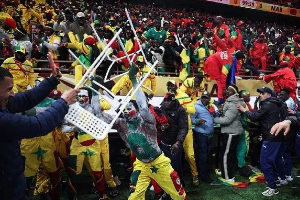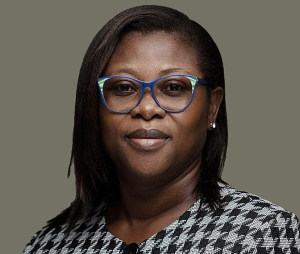Two hundred and forty seven full-blooded Ghanaians were to have been shot by a firing squad in the heat of the 4 June 1979 uprising, according to a document in the possession of the Chronicle.
Corroborating testimonies from the refugee community in London, including former Armed Forces Revolutionary Council (AFRC) operatives, also disclosed how these people were going to be tried and the laws under which they were going to be investigated, prosecuted and shot.
Those to be shot included top military officers, especially those who were on record as having held political offices in military and civilian administrations and had enriched themselves from those roles. The list of military black sheep spanned the period February 1966 to 4 June 1979.
Though the document did not mention all 247 people but the names of Lt Gen J.A. Ankrah, Major Gen A.K. Ocran and Lt Gen Okatakyie Akwasi Amankwah Afrifa, all architects of the February 1966 coup that toppled the Kwame Nkrumah government were boldly spelt out.
The Chronicle learnt that it was this plan that was being hatched that compelled General Afrifa to write to Acheampong to deal ruthlessly with Rawlings after his abortive 15 May uprising. A portion of Afrifa’s letter to Acheampong read: “How about if they line us all up and shoot us,” referring to the architects of both the 1969 and 1972 coups.
Others who were to be tried and shot included judges, lawyers, politicians, business people, religious leaders, chiefs and certain leaders of professional bodies, particularly, the vocal ones. Independent sources mentioned the names of Mr Sam Okudzeto, Mr Peter Ala Adjetey (current Speaker of Parliament), Mr Lynes Quarshie-Idun, Odoi-Sykes, S.K. Amofa, Mr Victor Owusu and Bishop Peter Akwasi Sarpong, of Kumasi Catholic Diocese.
To establish a basis for implicating and criminalising top army officers in the Acheampong and Akuffo era, General Acheampong was reportedly coaxed into calling a press conference during which he was expected to expose his colleagues on the National Redemption Council, Supreme Military Council (SMC I) and Akuffo’s Supreme Military Council (SMC II).
Acheampong failed to follow the cue given him by the AFRC leaders and ended up castigating his accusers and retorting, “How many of you sleep with only your wives?” In a fit anger, the AFRC leaders decided to show him where power lies by dragging him, together with Col Utuka, former Border Guards Commander, to the firing range at Teshie to be shot, as the first batch of those who faced the firing squad.
The initial arrangement was that all the top military officers were to be tried by a court martial after they had been investigated by a preliminary investigations team, comprising Captains Koda, Okai Koi, a certain Boateng and a few others. Captains Koda and Okai later fell out of the law themselves and ended up in prison for allegedly taking monies from some businessmen. They were later freed following a well-executed jailbreak that featured AFRC Chairman Rawlings as the architect. The ‘project’, as it was called, was to be coordinated by Flying Officer Odoi and was meant to be a coup to end all coups.
The document did not explain why Afrifa alone paid the ultimate price for the sins of February 1966 coup makers, but his push for a speedy trial of Rawlings and his men must have accounted for his being singled out, the Chronicle learnt. Though the generals were to be charged with high treason under military laws, evidence or the existence of any forms of trial are scanty.
General News of Thursday, 23 May 2002
Source: Ghanaian Chronicle
247 were target under AFRC executions
Entertainment











